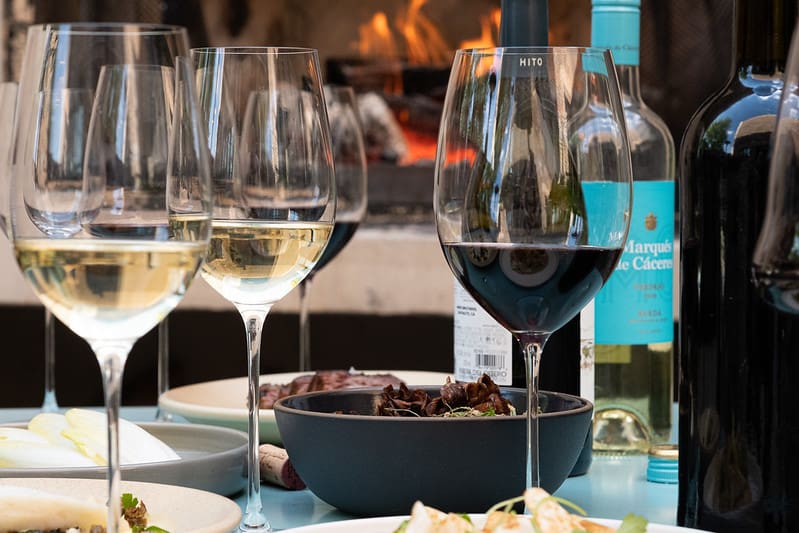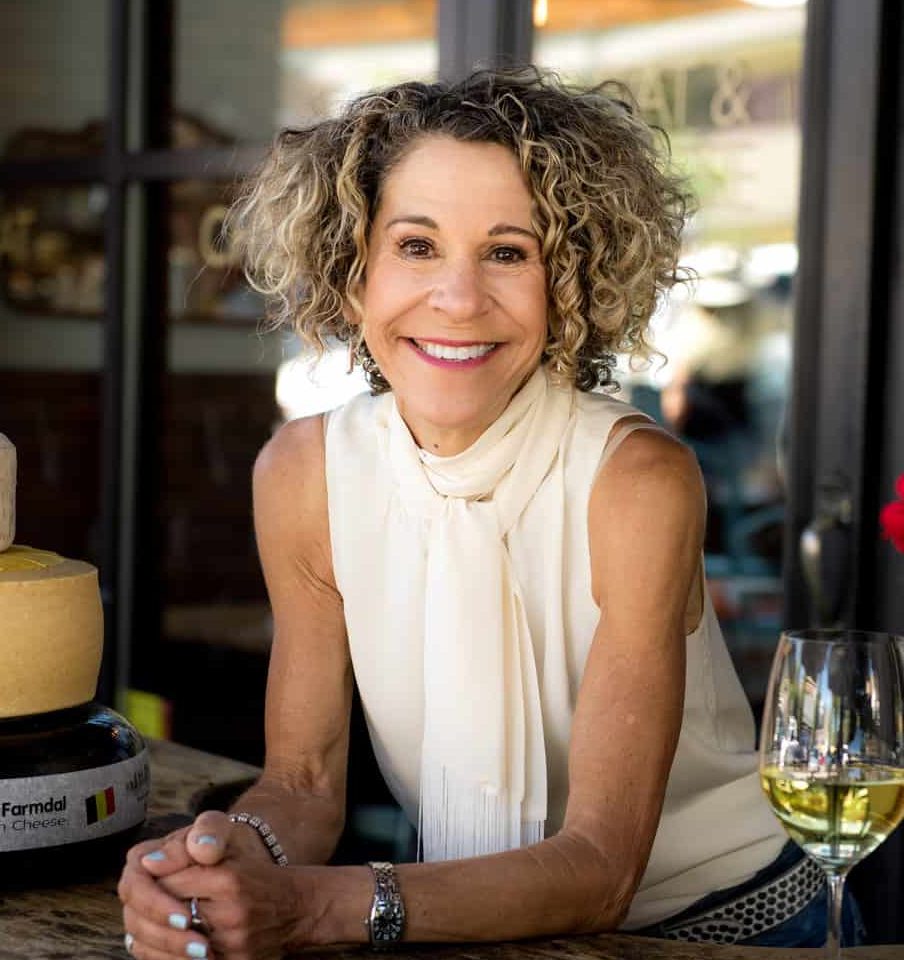
Put a chill on it: The cool weather wines!
When the summer season breathes its last symbolic gasp on Labor Day and the colors at the farmers’ markets begin to transition from bright yellows and ruby reds to dark greens, purples, and oranges, the wines in our glasses begin to change too.
Summertime is all about refreshing whites and rosés. Reds make an appearance too, particularly after dark. But when the sun is slowly dropping in the sky and yet sweater weather is still at bay, there are a few specific styles of wine to look for to make the seasonal transition too.

Clarete, not claret
Clarete (clare-ET-tay) is not a well-known style of wine in the United States, but in Spain’s Ribera del Duero, it is not only known, it is revered. That’s in part because it speaks to regional history, when white and red grapes were planted side by side and harvested simultaneously too. These white and red field blends were turned into wine, and because the mix of grapes varied from winery to winery, the resulting wines ranged in color from pale pink to nearly opaque red. The same is true today, where some winemakers are creating claretes using grapes from the same decades-old vines and some using the fruit from modern plantings. Each winemaker has his or her own style resulting in wines with different shades of red.
The main white grape used in Ribera del Duero clarete is called Albillo Mayor, but the signature grape in Ribera del Duero clarete and, for that matter, the entire region, is Tempranillo. Because of the range of clarete styles, the wines find their way side by side with all kinds of foods throughout the year. Of course, so too do Ribera del Duero rosés, sometimes called rosados. One thing is for sure: if they’re made from Ribera del Duero Tempranillo, the lighter wine we think of as a summer-only wine will take a new place in your year-‘round “favorites” wine line-up.

Winter whites
If there ever was a year-’round white wine, Rueda Verdejo is it. The ultra popular Spanish wine from the Rueda region ranges from light and fresh to complex and age-worthy. For late summer sipping, the wines to look for are those that fall in the middle – ones that are aged on the lees. These have weight and body and yet remain refreshing enough for sunny days and still-warm nights.
To get the most from any Verdejo but particularly the broader lees-aged ones (so too oak-aged), make sure they’re served above refrigerator temperature. That may sound surprising, but a too-cold wine is just that — too cold. The nuances and complexity of the wine tend to be muted when they’re super chilled. Instead, bring the wine up to 50 degrees (fridge temp ranges between 38 and 45 or so), pour a little in your glass, and keep the wine bottle on the table, not in an ice bucket. Of course, if you’re outside and it’s a particularly hot day, then you’ll need to compensate by keeping a slight chill on the wine. Otherwise, let it warm up ten degrees or even a little more, and enjoy its many layers of flavor and aromas as a result. This said, if you just can’t bear the thought of drinking your white wine close to room temperature, then by all means, put it back in the refrigerator. In the end, how-to-drink rules don’t matter if they don’t work for you.
Gran is grand
No matter what, not to be missed are the Verdejos that fall under Rueda’s Designation of Origin newest category, Gran Vino. These are wines made from grapes grown on vines that are at least 30 years old and with a yield of fewer than 6,500 kilos per hectare (about seven tons). These bring with them a combination of history, mature flavors, and current-day winemaking styles. It is why the Gran Vino designation is both unusual and particularly worth seeking out. These are wines that should find their way to the table any time, yet as the days grow longer, the long vineyard lives of Gran Vinos seem to make poetic sense. Bring on the winter whites. Labor Day has passed!

Chillin’
In this country, it is becoming a well-known fact that we drink our red wines too warm. Add to that the late summer sun, and the potential for too-warm wines no matter the color increases even more. That’s why the advice to serve red wine at room temperature never works. That “room” might be an outdoor patio where it’s 80 degrees. As wine expert Anthony Giglio says, “Let’s forget anyone ever said that red wine should be served at room temperature. It’s the earliest evidence of fake news that I can find that has nothing to do with politics.”
Given that, the question is, how can we bring the best out in our red wines? The answer: put a chill on it. But not all red wines are alike, which is why late-summer reds fall into their own special category. The temperatures are still warm, and we’re mostly still in lighter-wine mode. In Ribera del Duero, that signifies Crianza – wine that is aged a couple of years in barrel and bottle. Crianzas tend to be lighter than the longer-aged Reservas and Gran Reservas and take to chilling just as well as claretes and white wines. “No matter the type, weight, or age of the red wine, it will always benefit from a dip in the ice bucket (filled with ice and water) for five to 10 minutes,” says Giglio.
To get specific, Anthony says that lighter reds with higher acid like Crianzas should be served around 50ºF, while medium-bodied reds like Ribera del Duero Reservas should be served a bit warmer – 55ºF. Gran Reservas and many Cosechas should be warmer still – 60º to 65ºF maximum. The higher acid wines stay bright in the face of cooler serving temperatures, while the layers of flavor and aromas in big, bold wines come through best when served five to ten degrees warmer than the average cellar temperature of 55ºF
So just remember: as the autumn sun sets in and Labor Day has passed, it’s time to bring out the winter whites, the claretes, and the summer reds – served chilled, please. Think of it like this: Ribera del Duero and Rueda wines: always cool – cool to serve, served cool, and definitely cool to drink.




